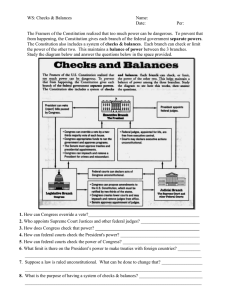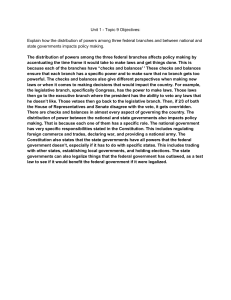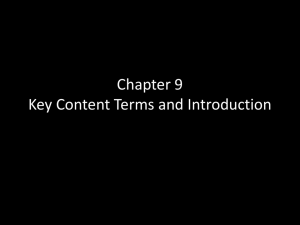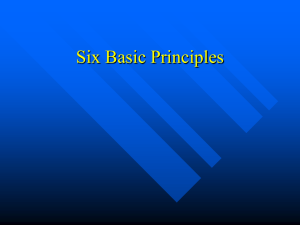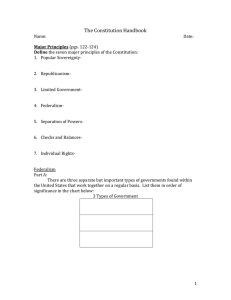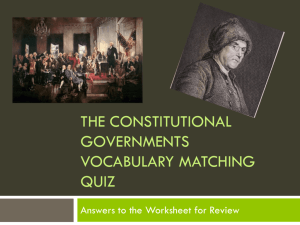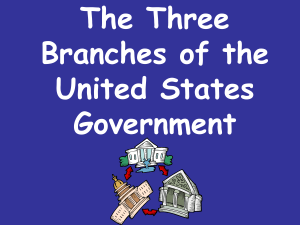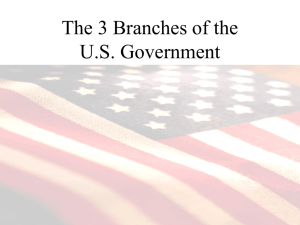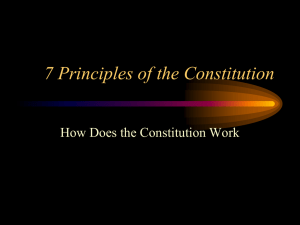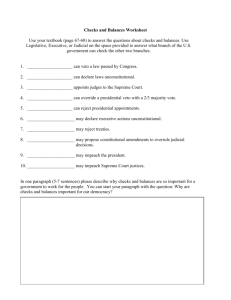Judicial Branch
advertisement
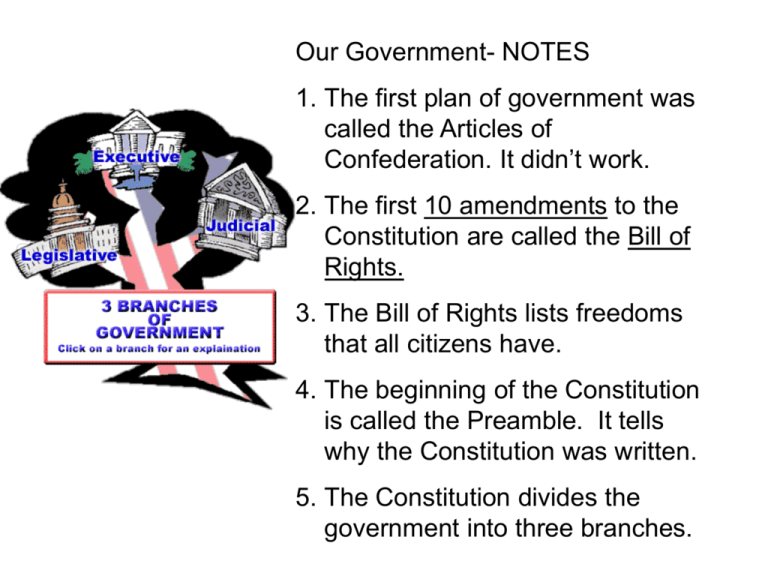
Our Government- NOTES 1. The first plan of government was called the Articles of Confederation. It didn’t work. 2. The first 10 amendments to the Constitution are called the Bill of Rights. 3. The Bill of Rights lists freedoms that all citizens have. 4. The beginning of the Constitution is called the Preamble. It tells why the Constitution was written. 5. The Constitution divides the government into three branches. 6. The three branches of government are the Executive, Legislative, and Judicial. 7. The Executive Branch, headed by the president, carries out the laws. 8. The Legislative Branch, Congress, makes the laws. Congress is divided into two parts: the senate and House of Representatives. 9. Every state has 2 senators. Each States Representatives are based on population. 10.The Judicial Branch, consisting of the Supreme Court and other federal courts, interprets/explains and applies the laws. This political cartoon is showing the three branches of government. What is it saying about the Legislative branch? 11.The Framers of the Constitution established a system of checks and balances in which each branch of government can check, or limit, the power of the other branches. 12.Checks and balances helps maintain a balance of power in the three branches. Political cartoons for the system of Checks and balances. What do you think each one means? Examples of Checks and Balances: 13.The Supreme Court can check the authority of congress by ruling a law unconstitutional. 14.The president can appoint the supreme court justices. 15.The president can veto a bill he doesn’t want to become law. Congress can override his veto with 2/3 majority. 16.Because all citizens have rights, they also have responsibilities. 17.Our government could not work very well without responsible citizens. 18.Responsibilities include: *obeying laws *paying taxes *defend the nation *serving on a jury *voting *being an informed citizen RESPONSIBILITIES OF CITIZENS Obey Laws

